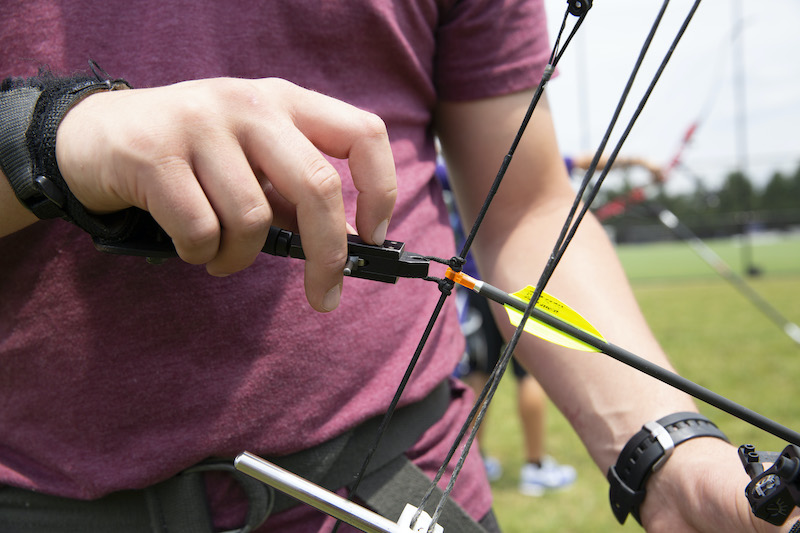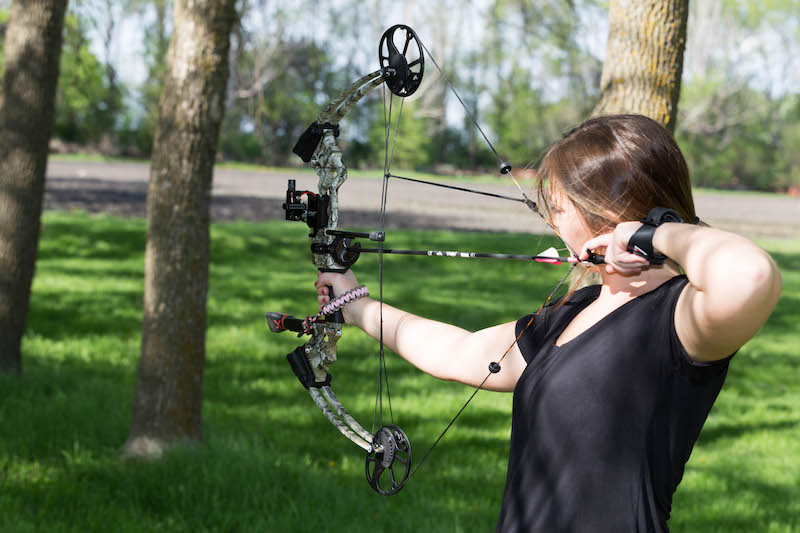If you’re just getting started in bowhunting, you’ve likely noticed its unique language. Understanding archery lingo and bow specs might seem hard, but you came to the right place. Bookmark this article and refer to it whenever you need help understanding bows and which bow to buy.
IBO Speed, ATA Speed and Actual Speed
The International Bowhunters Organization and Archery Trade Association use specific formulas to measure arrow speeds. IBO speed is measured by shooting a bow with an 80-pound draw weight (+/- 2 pounds), maximized draw length, and a 400-grain arrow. ATA speed is measured with a 70-pound draw weight (+/- .2 pounds), 30-inch draw length, and 350-grain arrow.
Therefore, arrow speeds listed online likely won’t represent what you’ll achieve with a bow set up to fit you for bowhunting. The draw weight will likely be lighter, the draw length shorter, and the arrow weight heavier. Those variables affect how fast your bow shoots an arrow, which is measured in feet per second. The higher the number, the faster your arrow is flying. Most hunting setups propel arrows 270 to 285 fps, which is slower than the often-advertised IBO or ATA speeds of 350 fps or higher.
Axle-to-Axle Length
A small pin, the axle, holds the bow’s cams or wheels at the end of both limbs on compound bows. The distance between the axles is the axle-to-axle measurement. That measurement can be as short as 20 inches, with others measuring 35 inches or longer. Shoot a few bows with differing axle-to-axle lengths to learn which one fits you best.
Peep Height
Compound bows include a peep sight to help archers consistently use the same sight picture for each shot. The distance from your bowstring’s nocking point to your peep sight is the peep height. Set your peep height for distances you’ll shoot most often. If you shoot out to 60 yards but shoot most often at 20 yards or less, set the peep for about 40 yards so you can consistently align your sights for your entire effective range.
D-Loop

Consistency is vital to accuracy. A D-loop ties to your bowstring from the top of your nocking point to the bottom to form a “D” shape. You clip your release-aid to the D-loop to ensure it’s in the same location for each shot.
String Servings
String servings are tough threads wrapped around the bowstring to protect it from cuts or abrasions. Think of the servings as insurance and protection for your bow’s most essential component. Maintain your bowstring by waxing it regularly, but don’t wax your servings. Wax holds dust and debris that can compromise the servings. Depending on how often you shoot, replace your bowstring and cables every three years.
Binary Cam

A binary-cam system uses synchronized top and bottom cams. As the bow is drawn or released, the cams rotate in unison to generate consistent arrow flight.
Solo Cam
A solo- (one) cam bow features a round idler wheel on the top limb and an elliptical-shaped cam on the bottom limb. Because the top cam is concentric, solo-cam bows usually produce a smooth draw but slower arrow speeds.
Hybrid Cam
Hybrid-cam bows use a control cam on the top limb and a power cam at the bottom. Similar to binary-cam bows, hybrid-cam bows shoot arrows faster than do solo-cam models, but the top and bottom cams must be perfectly tuned to deliver consistent arrow flight.
Dual Cam
As the name implies, dual-cam bows use two-cam systems to produce an aggressive draw with acute string angles to generate faster arrow speeds. This is a vital feature for archers pulling minimal draw weights with short draw lengths. They’ll usually achieve significantly faster arrow speeds and more kinetic energy with dual-cam bows than with single-cam models.
Conclusion
As you’ve read, many factors go into choosing the right bow, but the first step is understanding what makes each bow unique. Those factors underscore the importance of visiting archery shops and working with a pro as you consider your options.
If you’re new to archery, the best way to choose a bow is to shoot different models by various manufacturers. You’ll soon notice differences that steer you to a specific model.




